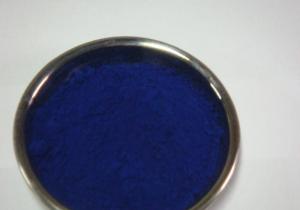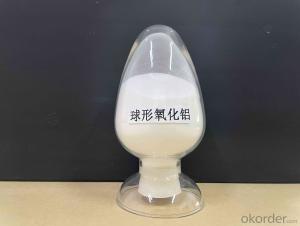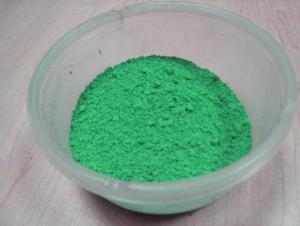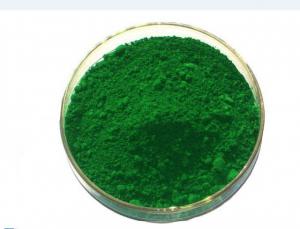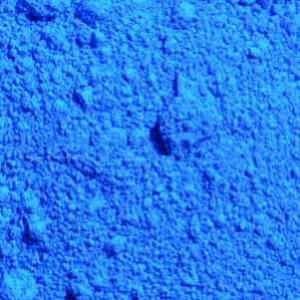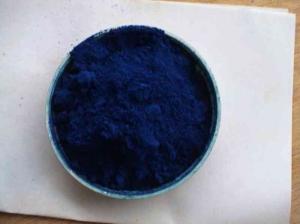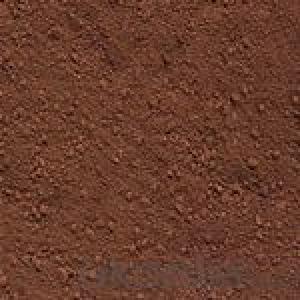Pigment Blue 15:1 For Coating
- Loading Port:
- Qingdao Port
- Payment Terms:
- TT or LC
- Min Order Qty:
- 1 Metric Ton m.t.
- Supply Capability:
- 7,500MT/Year m.t./month
OKorder Service Pledge
OKorder Financial Service
You Might Also Like
Product Details of Phthalocyanine Blue L6905F:
Production Details of Phthalocyanine Blue | |||
Chemical Structure | CuPc α | ||
Color Index No. | PB 15:0 | ||
Application | Ink | ||
Physical Form | powder | ||
Test Items | Index | Test Method | |
Relative Tinting Strength | 100 +_5% | DIN55986 | |
ΔE,ΔL,Δa,Δb | ≤1,+1,+1,+1 | ||
PH | 5.8~8 | DIN ISO 787-9 | |
Density 20℃ g/cm3 | 1.6 | DIN ISO 787-10 | |
BET m2/g | 66 | DIN 66131 | |
Oil absorption g/100g | 35~45 | DIN ISO 787-5 | |
105℃ Volatile Matter | ≤1.0% | DIN ISO 787-2 | |
Water Solubles | ≤1.5% | DIN ISO 787-13 | |
Residue on Sieve 100 mesh | ≤5% | DIN 53195 | |
Conductivity us/cm | ≤300 | DIN ISO 787-14 | |
Solvent Resistance | Index | Test Method | |
Water | 5 | DIN ISO 105-A03 | |
White Spirit | 5 | DIN ISO 105-A03 | |
Tolerance | Index | Test Method | |
Light Fastness | 8 | DIN ISO 105-A03 | |
Weather Resistance | 5 | DIN ISO 105-A03 | |
Acid Resistance | 5 | DIN ISO 105-A03 | |
Alkali Resistance | 5 | DIN ISO 105-A03 | |
Packing Details Of Phthalocyanine Blue L6905F :
25kg/ kraft or PP bag , or as your requirements .
Application Of Phthalocyanine Blue L6905F :
1) Printing ink
2) Paint
3) Plastic
4) Rubber
5) Pharmaceuticals
6) Printing colors
7) Highly dispersible
8) High density pigment used for addition of coloration
9) Limited anti-dissolvent and anti-flocculability
10) High temperature resistance and sunshine resistance
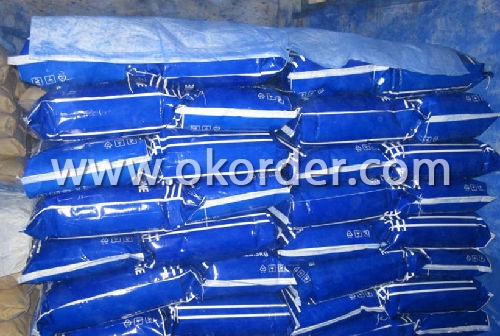

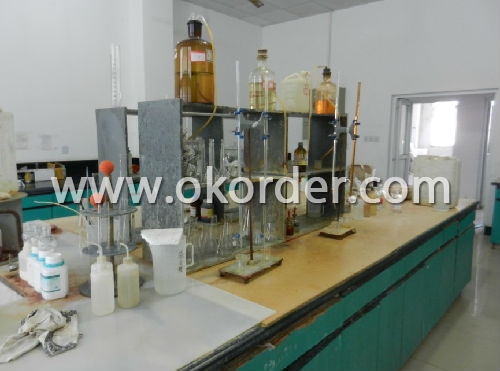
- Q:Can you take any powder, grind it finely, and mix linseed oil into it to make oil paints to make paint? Or do paint pigments have to have special characteristics? Thanks!!
- Pigments are specific minerals found in rocks. Then they are ground down and mixed with the binders for oil, acrylic, and watercolor paints. You can take art classes that teach you how to make your own paints. I have a cousin who hikes to find her own pigments and makes all the colors she paint with. If you'd like something less labor-intensive, you can buy the pigments you want from lots of art stores these days. They can be added to pre-existing colors to enhance them, or you can start from scratch to formulate your own colors. The bottles i've seen are around 8 ounces, and cost about $50. You will likely find books in the library and articles online that will help you learn to make your own pigments.
- Q:(Explain what happens when a pigment molecule is struck by electromagnetic radiation in the visible light spectrum.)
- pigments are molecules that absorb electromagnetic radiation. For example, the chlorophyll pigment in plants absorbs blue and red light, which is why they reflect green light (since green is the color not absorbed). Another example is melanin, which is the pigment that darkens the skin of people. Melanin absorbs UV to protect the skin. A pigment molecule struck by EM radiation in the visible region may absorb some of the light depending on what pigment it is.
- Q:explain an absorption spectrum of different pigments and the action spectrum ofphotosynthesis.
- A pigment is any substance that absorbs light. The color of the pigment comes from the wavelengths of light reflected (in other words, those not absorbed). Chlorophyll, the green pigment common to all photosynthetic cells, absorbs all wavelengths of visible light except green, which it reflects to be detected by our eyes. Black pigments absorb all of the wavelengths that strike them. White pigments/lighter colors reflect all or almost all of the energy striking them. Pigments have their own characteristic absorption spectra. The action spectrum of photosynthesis is the relative effectiveness of different wavelengths of light at generating electrons. If a pigment absorbs light energy, one of three things will occur. Energy is dissipated as heat. The energy may be emitted immediately as a longer wavelength, a phenomenon known as fluorescence. Energy may trigger a chemical reaction, as in photosynthesis. Chlorophyll only triggers a chemical reaction when it is associated with proteins embedded in a membrane (as in a chloroplast) The familiar colors of the rainbow in the spectrum include all those colors that can be produced by visible light of a single wavelength only, the pure spectral or monochromatic colors.
- Q:I hear about it cause my Friend is albino and she was born with no pigments in her hair,skin or eyes
- then she is natural coz she is not using any substances to colour or paint....
- Q:why light and pigments are different?
- A pigment is a material that changes the color of reflected or transmitted light as the result of wavelength-selective absorption. This physical process differs from fluorescence, phosphorescence, and other forms of luminescence, in which a material emits light. Many materials selectively absorb certain wavelengths of light. Materials that humans have chosen and developed for use as pigments usually have special properties that make them ideal for coloring other materials. A pigment must have a high tinting strength relative to the materials it colors. It must be stable in solid form at ambient temperatures. For industrial applications, as well as in the arts, permanence and stability are desirable properties. Pigments that are not permanent are called fugitive. Fugitive pigments fade over time, or with exposure to light, while some eventually blacken. Pigments are used for coloring paint, ink, plastic, fabric, cosmetics, food and other materials. Most pigments used in manufacturing and the visual arts are dry colourants, usually ground into a fine powder. This powder is added to a vehicle (or binder), a relatively neutral or colorless material that suspends the pigment and gives the paint its adhesion.
- Q:what is one reason why plants have accessory pigment molecules like chlorophyll b and carotenoids?
- They have different absorption maxima to chlorophyll a and so these accessory pigments make light absorption more efficient by absorbing some wavelengths not absorbed by chlorophyll a and thus provide a greater input of light into the reaction centres.
- Q:Why do plants contain so many pigments?
- Chlorophyll is the respond and here is why - this pigment provides flowers their relative eco-friendly shade because of the fact flowers undergo photosynthesis to furnish themselves with glucose for capacity. in this technique, flowers soak up photograph voltaic capacity from the sunlight. Chlorophyll has a eco-friendly pigment for the reason that's the pigment that attracts photograph voltaic capacity the main effectively. consequently offering the plant with greater photograph voltaic capacity, which would be converted into chemical or warmth capacity by way of cellular respiratory, yet that's an entire distinctive tale.
- Q:How are plant pigments involved in photosynthesis?
- Plant pigments - as other pigments - interact with light to absorb only certain wavelengths. In plants the different sorts of pigments are useful to absorb available wavelengths of light and enable photosynthesis in shadow, in bright sunshine, in deep sea etc.: each pigment reacts with only a narrow range of the spectrum, there is usually a need to produce several kinds of pigments, each of a different color, to capture as much as possible of the sun's energy.
- Q:(After the fifteenth century)
- Pigment is color in powder form. An example is lamp black; it was first made from the soot of kerosene lamps ground fine. Binder is a substance used to hold pigment together and make it adhere; in the previous example, linseed oil would be the binder for the lamp black pigment. Vehicle is a medium acting as a solvent, carrier, or binder for paint; turpentine or mineral spirits would be a vehicle but so would linseed oil as well to help dilute the paint and help it cover a large area. Hope that helps and thanx.
- Q:pretty self-explanatory...
- Pigments help in making food for the plants they also give color to it.Pigments are of different types which give different color to its leaves or fruits.Like mango is green first and then turns yellow coz green pigment is replaced by yellow pigment. Green pigment in most of the fruits is present only till it requires food and is raw.
1. Manufacturer Overview |
|
|---|---|
| Location | Henan ,China |
| Year Established | 1970 |
| Annual Output Value | Above US$100 Million |
| Main Markets | North America; South America; Eastern Europe; Southeast Asia; Africa; Oceania; Mid East; Eastern Asia; Western Europe; Southern Europ; South Asia |
| Company Certifications | REACH, ROSH,SVHC 53 Items Certificate ,SGS,CIQ,ISO9001:2008 |
2. Manufacturer Certificates |
|
|---|---|
| a) Certification Name | |
| Range | |
| Reference | |
| Validity Period | |
3. Manufacturer Capability |
|
|---|---|
| a)Trade Capacity | |
| Nearest Port | Xingang Port |
| Export Percentage | 51% - 60% |
| No.of Employees in Trade Department | 300 People |
| Language Spoken: | English; Chinese;Spainsh; Farsi;French;German |
| b)Factory Information | |
| Factory Size: | Above 90,000 square meters |
| No. of Production Lines | Above 3 |
| Contract Manufacturing | Design Service Offered; Buyer Label Offered;OEM |
| Product Price Range | Rock Bottom Price With Best Quality |
Send your message to us
Pigment Blue 15:1 For Coating
- Loading Port:
- Qingdao Port
- Payment Terms:
- TT or LC
- Min Order Qty:
- 1 Metric Ton m.t.
- Supply Capability:
- 7,500MT/Year m.t./month
OKorder Service Pledge
OKorder Financial Service
Similar products
New products
Hot products
Related keywords


